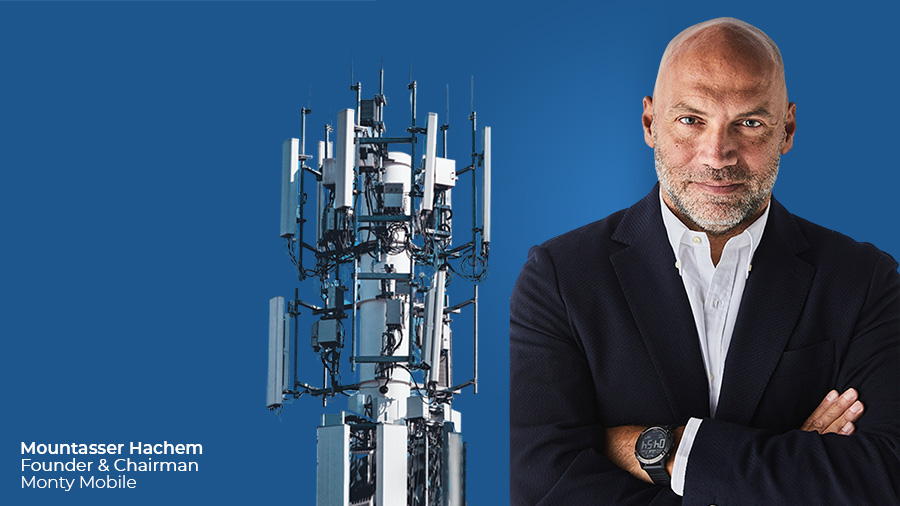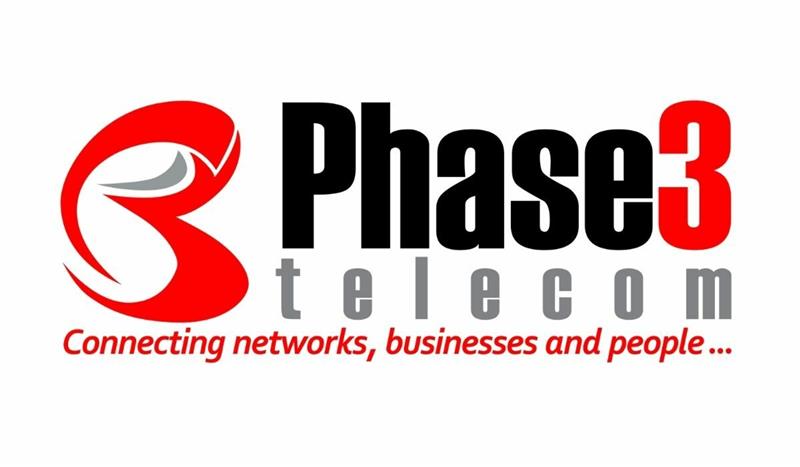Press Releases
£4m Scottish Government investment to launch 5G innovation hubs to drive economic growth across Scotland

The Scottish Government has today confirmed a £4m funding package to support the establishment of a network of hubs to accelerate the adoption of 5G.
The Scotland 5G Centre to launch national network of hubs as announced in the Programme for Government, starting in Forth Valley.
The Scotland 5G Centre (S5GC) will today (September 17th, 2020) launch its S5GConnect Programme, delivering the next stage of the Scottish Government’s 5G strategy with a series of hubs, as announced in the Scottish Government’s Programme for Government. The Hubs will support economic growth through the deployment and adoption of 5G services across the country, supported by a £4m investment from the Scottish Government.
The Connect Programme will help bridge the gap between academia, industry and government bodies to accelerate 5G deployment and the adoption of 5G services to realise its economic and societal potential for Scotland, and enable businesses, organisations and people to reap the benefits of this new connectivity platform.
The S5GC is working and collaborating to build on Scotland’s existing Innovation Centres and government initiatives to accelerate the post pandemic recovery and address the digital gap that has been highlighted as key to ensuring Scotland’s business sectors, health care and education can thrive in the new economic environment.
Paul Wheelhouse MSP, Minister for Energy, Connectivity, and the Islands will later this morning, at an online event ,discuss plans to create a network of S5GConnect Hubs across Scotland as part of the Programme for Government, to an audience of businesses, academic institutions, and public sector organisations with an interest in 5G.
The S5GConnect Hubs will promote innovation and investment, focussing on sectors relevant to their local areas. The Hubs will work with mobile operators and private network providers to accelerate regional 5G networks, offer a private network with advanced capabilities, as well as access to an accelerator facility and mentoring schemes.
To reflect the importance of small and medium-sized enterprises (SMEs) to the Scottish economy, the hubs will also provide specific support packages for small businesses. They will support SME engagement where they can develop, prototype and test real-world experiments and use cases over a 5G innovation platform, offer one-to-one consultancy and professional support to develop and scale businesses.
Combined, the hubs will aim to enhance Scotland’s overall connectivity by building a national infrastructure, creating momentum that establishes the entire country as a global leader in 5G technologies.
Scotland’s Connectivity Minister, Paul Wheelhouse MSP, said:
“The 5G revolution presents a significant opportunity for us in the years ahead, and seizing such opportunities is particularly important as we look to build the economic recovery following the lockdown required to suppress the COVID-19 virus. A study conducted by Deloitte in 2019 found that harnessing enhanced 4G and 5G connectivity could increase Scotland’s GDP by more than £17 billion by 2035.
“The Scottish Government’s investment of £4m through the S5GConnect programme will enhance and widen digital connectivity in all parts of the country because we believe that it is through deploying next-generation technologies that we can create something special for businesses, families and communities.
“The Forth Valley Hub, as the first of ten such hubs, will initially focus on the delivery of digital platforms that support job creation, skills programmes, and innovation support for SME and R&D activities. Its first project will aim to develop a green data recovery platform, which will support Scotland’s net zero economy.
“Potential locations for nine additional hubs across Scotland are being considered with plans for further rollout over the course of 2020 and 2021.”
Paul Coffey, CEO at The Scotland 5G Centre, said:
“We are delighted to be launching the S5GConnect programme today and to be able to start the process of offering businesses across Scotland the opportunity to get involved in the acceleration of 5G deployment. The role of the Scotland 5G Centre is to act as a catalyst for bringing together industry, academia and the public sector and this programme allows us to do that. We are excited to begin working with industry partners from a variety of sectors on this initiative.
The first hub will be located in Alloa, Clackmannanshire serving the wider Forth Valley region, and builds on a partnership between Scotland’s International Environment Centre, which is part of the University of Stirling, and BT, the telecoms group.
“5G deployment has commenced, but the technology is still nascent – and some of the new use cases are still a few years away. The S5GConnect Hubs will play a key role in accelerating that process and making the potential of 5G a reality. They will think nationally, but act locally, bringing together global and national priorities with local expertise through the reach of existing regional centres and organisations.
“We are working in tandem with the national network of development agencies and enterprise accelerators to establish these facilities quickly. This is a hugely exciting development for Scotland and the wider UK 5G ecosystem and we look forward to announcing more hubs in the near future.”
Press Releases
Monty Mobile: The First Company in the Middle East & Africa to Provide 5G End-to-End Solutions for Telcos

Monty Mobile provides an in-house, cost-effective, well-optimized 4G+ and 5G end-to-end wireless solution serving both small and large-scale mobile and fixed operators targeting both urban and rural areas.
Moreover, operators are offered flexible payment plans for up to 5 years, first payment after 3 years, helping them stay ahead of their competitors.
This on- cloud solution guarantees improved scalability, mobility and security in addition to great savings on both CapEx and OpEx.
With this solution, Monty Mobile is introducing an alternative to Tier1 Telecom Suppliers such as Ericsson, Huawei, Nokia, and ZTE.
“The best is yet to come; stay connected!”, says Mountasser Hachem, Founder & Chairman of Monty Mobile.
More details regarding this full end-to-end solution will be disclosed in the Inside Telecom magazine next month in an exclusive interview.
Press Releases
Africa’s Leading Independent Telecommunications Services Provider, Phase3 Telecom moves onto Digital Connectivity Enterprise in Nigeria and West African Sub-region

The upgrades will cover security features, performance enhancements. agile update capacity and quality delivery mechanisms.
ABUJA, Nigeria, March 10, 2022: Africa’s leading independent aerial fiber optic network infrastructure and telecommunications services provider, Phase3 Telecom, is enabling advanced digital connectivity, improved performance and enhanced network security for enterprise. This drive is targeted at cost efficient and unified network endpoint management for businesses in Nigeria and the West African sub-region.
This development is also designed to amplify Phase3 enterprise value active network deployments for MSMEs, large scale corporates and institutions.
According to the company’s executive chairman – Stanley Jegede, “this expansive service optimization is targeted at improved coverage on Phase3 network routes through Africa as well as to assure solutions that help businesses transform and scale seamlessly.
He says, “Phase3 current network upgrades is an ongoing exercise and will cover security features, performance enhancements, agile update capacity, and quality delivery mechanisms for enterprise segments. Especially in the areas of productive work-from-anywhere or do-business-from-anywhere and digitized remote connectivity solutions”.
In addition to the company’s focus to increase enterprise based networks data handling capacity and their capability to access data within dissimilar sources faster vis-a-vis smarter, as today’s global clime demands.
Jegede, in his concluding statement says, “Phase3 layered digital capabilities will both enhance Phase3 network architecture and compliment legacy connectivity service experience in remote locations with significant Phase3 presence and network access points.
About Phase3 telecom
Phase3 Telecom is a leading independent fiber optic infrastructure with Points-of-Presence (POPs), colocation, and NOCs in Nigeria. Issued a National Long Distance Operator (NLDO) license in 2003 by the Nigerian Communications Commission (NCC), and with a vibrant as well as a dedicated team of experienced professionals, we are the network of choice for high-performance, data-intensive and low latency connectivity that span dedicated internet access, MPLS VPN, metro ethernet, wide area network solutions etc. We currently operate across the ECOWAS region and international markets through strategic partnerships that allow us to connect our clients across 400 cities worldwide. And ours is an extensive and secure network with end-to-end capabilities that service providers and businesses can rely on to scale, manage costs and assure efficiency. As our network continues to evolve into other layered service streams, including cloud-based and network security solutions – our invaluable clients will continue to remain the core of every investment that we make; innovation that we create; and technology that we adopt during the 4th industrial revolution to position us as the network of the future.
Press Releases
Digital Therapeutics Revenue from Health Insurers to Reach $8 Billion Globally by 2026

Hampshire, UK – 14th March 2022: A new study from Juniper Research has found that digital therapeutics revenue from health insurers will increase to $8 billion by 2026, up from $1.1 billion in 2022; representing a growth of 610 percent over the next four years. Digital therapeutics are clinically validated software programs for the treatment of chronic medical conditions, either independently or in conjunction with other therapies.
The report found that digital therapeutics facilitate the proactive mitigation of chronic medical conditions before they require costly interventions; enabling health insurers to reduce long-term costs per patient. However, it highlighted that these savings will be limited to health insurers in developed regions, where consumer devices and digitalized health infrastructure are ubiquitous. As such, it noted that health insurers in Africa and Latin America will contribute less than 2 percent towards health insurer-led digital therapeutics revenue in 2026.
A new research, Digital Therapeutics & Wellness: Key Trends, Business Models & Market Forecasts 2022-2026, identified that insurers will also benefit from an ongoing shift among digital therapeutics vendors towards engagement- and results-based payments. It recommends that therapeutics providers looking to leverage this trend prioritize the development of performance benchmarks, as demonstrating improvement and preventing patient abandonment will become a direct monetary issue.
Machine Learning to Move into Advisory Role as Liability Issues Emerge
The report forecasts that the number of people using digital therapeutics will increase by 381% over the next four years, and recognizes that machine learning will be key to this growth by facilitating advanced data analytics, remote patient monitoring, and real-time conversational coaching. However, it cautioned that an ongoing lack of standards surrounding the use of machine learning within digital therapeutics will result in vendors limiting its role in their offerings.
Research author Adam Wears explained: “As developers and healthcare providers increasingly grapple with issues of liability and malpractice, machine learning will transition from a patient-facing role to a diagnostic tool offered through provider-facing dashboards; to be used by clinicians and specialists in a manner akin to traditional computer-aided diagnostics.”























